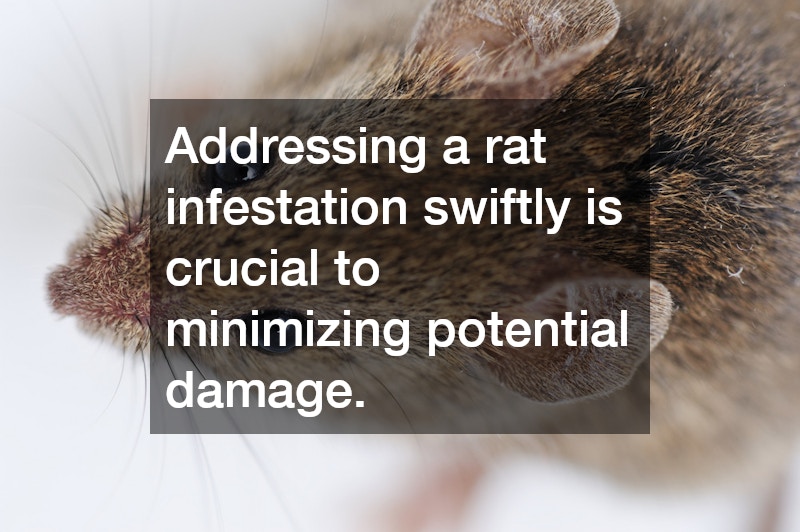This article provides a comprehensive guide on safe and effective methods to eliminate rats from your attic, covering preventive measures, trapping techniques, and aftercare practices. Addressing a rat infestation swiftly is crucial to minimizing potential damage and health risks. Let’s delve into the steps you can take to ensure your attic remains a rodent-free zone.
What are the Signs of a Rat Infestation in Your Attic?
Subtle Symptoms to Watch For
Identifying a rat infestation early can save homeowners from extensive damage. Look for subtle signs like droppings in corners, which are often small, dark, and tapered at the ends.
You may also hear scratching or scurrying noises at night or find gnaw marks on insulation or wood.
Odor can also be a telltale sign, as a rat’s presence often leaves behind a musky smell. Tracing this odor can help locate nesting areas or entry points. Additionally, the presence of nests made from shredded materials should raise concerns. These signs indicate the need for rodent removal.
Common Entry Points
Rats can gain entry to your attic through various means, exploiting vulnerabilities around your home. Small gaps or holes around vents, eaves, and roofing are typical entry points. It’s important to inspect these areas regularly to prevent rodent access.
Additionally, rats are adept climbers and can use overhanging tree branches to reach your roof and attic. Keeping trees trimmed away from your home denies them a natural bridge. Furthermore, damaged and improperly sealed windows or doors, especially in attics or basements, can invite unwanted guests.
Impact on Home and Health
The presence of rats in your attic can have significant consequences for your home and health. Structurally, rats can cause damage by gnawing on wood, insulation, and even electrical wires, increasing the risk of fire hazards. They also contaminate spaces with urine and droppings, which can degrade materials over time.
Health-wise, rats are notorious carriers of various diseases, such as leptospirosis, hantavirus, and salmonella, which can be transmitted to humans. These diseases can be spread through direct contact with rat droppings or indirectly through the air. Prevention and control of a rat infestation are essential to minimize these health risks.
How Can You Effectively Trap Rats?
Choosing the Right Trap
When dealing with a rat infestation, selecting the appropriate trap is crucial for effectiveness. Snap traps have been a traditional choice, offering a quick and humane way to kill rats. However, they require careful handling and strategic placement.
Glue boards, another option, work by trapping rats on a sticky surface, but these can be less humane and are not always recommended. Electronic traps provide a modern solution, delivering a high-voltage shock to quickly eliminate rats. Each type of trap has its pros and cons, dependent on the specific situation and homeowner preferences.
Setting Traps Strategically
Merely purchasing traps is insufficient if they are not used correctly. Proper baiting is vital; popular choices include nuts, peanut butter, and dried fruit. Fresh bait should be used to ensure attraction and replaced regularly to maintain effectiveness.
Placement is equally important; traps should be set along paths where rats frequently travel, such as along walls or near droppings. Strategic setting increases the probability of capturing rats quickly and efficiently. Avoid placing traps in open spaces where rats may not venture naturally.
Electronic vs. Traditional Methods
Weighing the effectiveness of electronic versus traditional trap methods can guide your approach to rat removal. Electronic traps offer the convenience of quick, automated killing with minimal contact, which some homeowners prefer. They are often considered more humane, providing an instant kill.
In contrast, traditional methods, such as snap traps, are cost-effective and straightforward. However, they may require more frequent checking and resetting. Each method’s success can vary based on infestation size and homeowner preference.
How Can You Prevent Future Rat Infestations?
Home Maintenance Tips
Preventing future infestations begins with maintaining your property to ensure there are no easy access points for rodents. Regularly inspect and seal cracks, gaps, and holes in your home’s exterior with steel wool or another rodent-resistant material. Paying attention to roof and attic areas is especially critical.
Food storage plays a significant role in attracting pests; ensure all food is kept in sealed containers and trash is disposed of promptly. Keeping a clean and tidy home, free from clutter, will reduce hiding places for rats. Regular inspections can help catch potential entry points before they become a problem.
Using Natural Repellents
Natural repellents can provide an eco-friendly way to keep rats out of your attic without harmful chemicals. Peppermint oil is commonly touted for its strong scent, which rats reportedly dislike. Applying the oil on cotton balls and placing them strategically around the attic can deter rodents.
Ultrasonic devices that emit sound waves are another natural deterrent; these are designed to irritate and drive away pests without affecting humans. Both methods offer a chemical-free way to protect your home, though results can vary. Combining several natural methods often yields the best results.
Professional Pest Control Solutions
Sometimes, an infestation may require the expertise of professional pest control services. If DIY methods are not delivering results or the severity of the infestation is overwhelming, it may be wise to call in professionals. Pest control companies have access to more efficient tools and treatments to address the problem.
In conclusion, dealing with rat infestations requires a comprehensive approach involving detection, elimination, and prevention. Swift action, using a combination of effective traps and preventive measures, is essential to protect your home and health. By being vigilant and proactive, you can ensure your attic remains a rat-free zone.



